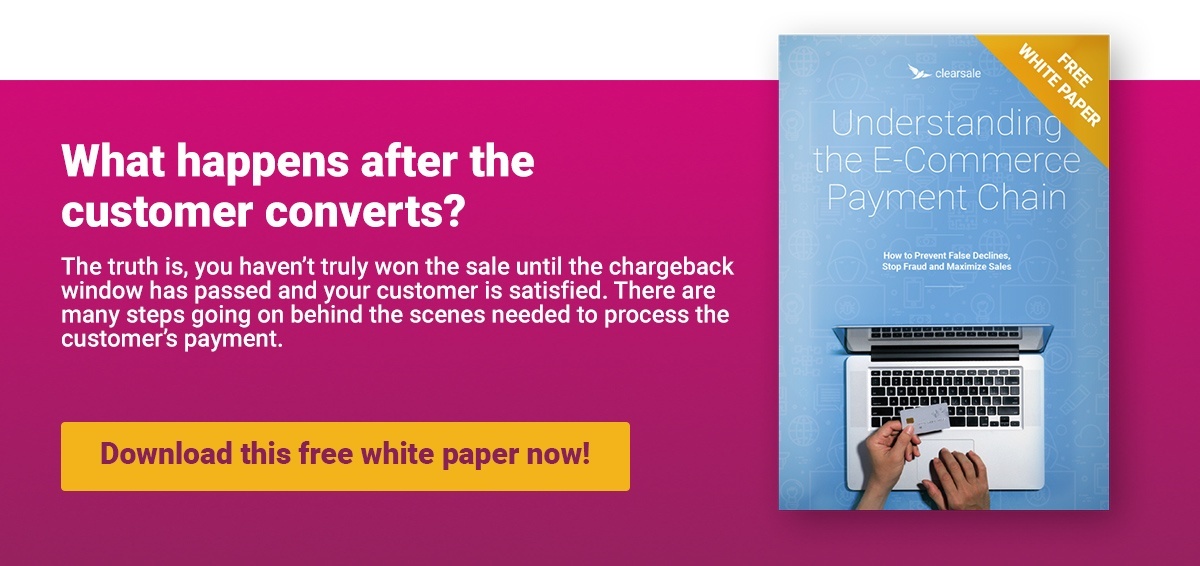How International Payment Processing Is Different
When a customer places an online order, virtually no time elapses between them clicking Buy Now and receiving their order confirmation. But what seems like an instantaneous process is actually quite complex – particularly when merchants start selling and shipping internationally.
Despite the added complexity of overseas sales, it’s no surprise you might be keen to expand to overseas markets. After all, 65% of consumers are comfortable making purchases from beyond their own local markets — so long as the price is right.
But before you pack your bags for that overseas scouting trip, here’s what you need to know about how international payment processing is different, so you can determine whether it’s worth the commitment.
How Payment Processing Works in the United States
When a U.S. customer decides to make a domestic online purchase, credit card processing usually goes like this:
1. The Customer Places the Order
When a customer places an order online with a credit card, the merchant’s website uses a payment gateway to validate the order and begin processing the payment.
If the merchant uses a third-party fraud protection system, the payment gateway sends the transaction details through that system to run through fraud checks.
2. The Payment Processor Processes the Transaction
If the fraud protection system approves the transaction, the payment gateway sends the transaction details to a payment processor that accepts and processes payments and settles and clears funds.
3. The Issuing Bank Approves or Denies the Transaction
The payment processor sends the payment details through the card network to the bank that issued the customer’s credit card. (The card network takes a percentage of the total transaction as payment for serving as the go-between. This fee varies based on several factors, like card type and purchase type.)
The issuing bank approves or denies the transaction based on the card status, the cardholder’s credit limit, and any additional fraud checks the issuing bank may utilize.
The bank sends the approve/decline answer to the payment processor via the card network, and the payment processor in turn sends the approve/decline via the payment gateway to the website, merchant and customer.
If the transaction has been approved, the merchant can now ship the order. If the transaction has been declined, the customer can try to place the order again with a different payment method, can reach out to the merchant’s customer support team for help, or can leave the site without a successful purchase.
4. The Issuing Bank Charges the Customer’s Account
If the payment is approved, the bank charges the customer’s credit card account and forwards the funds via the card network to the merchant’s bank, less any fees to cover costs. This is called “settlement” and typically takes two to four business days to complete.
This payment process is typically simple and straightforward – at least, with domestic orders. But when you throw cross-border transactions into the mix, global payments aren’t always as smooth.
Routing Cross-Border Payments
One of the biggest challenges that payment processors face with cross-border payments is determining how to route the transaction.
For example, not every acquiring bank accepts all types of credit cards, so lesser-known cards may need to be routed to a bank specializing in these cards. Similarly, some acquiring banks may specialize in particular industries. As well, some banks may not be equipped to handle a specific currency. (Considering there are more than 180 currency types in play worldwide, no one acquirer can handle them all!)
To address all these differences, payment processors must establish routing rules that direct every transaction to the appropriate acquiring bank – whether that’s based on the location of the customer, the currency, the industry, or another factor.
The Cost of Processing Global Transactions
How else does selling beyond your borders impact payment processing? The most obvious answer is currency.
Exchange rates are always fluctuating, which adds another layer of complexity to the payment process. This not only impacts your inventory and fulfillment costs, it also can create confusion for the customer over the true cost of their purchase. This confusion may be a primary cause of shopping cart abandonment rates nearing 70% on international purchases. Worse, when customers place an order without knowing the cost in their local currency, they may be unpleasantly surprised when they receive their credit card statement – potentially leading to complaints and even chargebacks.
International transactions are also made more complex by the addition of foreign transaction fees and taxes, including value-added taxes and customs duties. Not only can these fees make international transactions more expensive, they can also slow down the purchase process.
Growing Your International Business Safely
With cross-border shopping projected to make up 20% of e-commerce by 2022, it’s only natural that merchants was a piece of this pie. And yet, it’s important to remember that new markets also bring new challenges, including:
- New laws
- Industry best practices
- Cultural differences
- Payment preferences
- Ensuring your business is PCI compliant
- Follows each country’s customer authentication rules
- Implementing country-specific regulations, such as GDPR
The good news is you can reduce your risk of fraud, chargebacks and revenue loss and increase your chances of safely growing your business simply by implementing the right fraud protection strategy. At ClearSale, we use a combination of artificial intelligence and human review to help our more than 3,000 clients safely expand internationally.
We can help you, too. Contact ClearSale today to find out how we can add success and security to your global sales.
 Bruno Farinelli
Bruno Farinelli